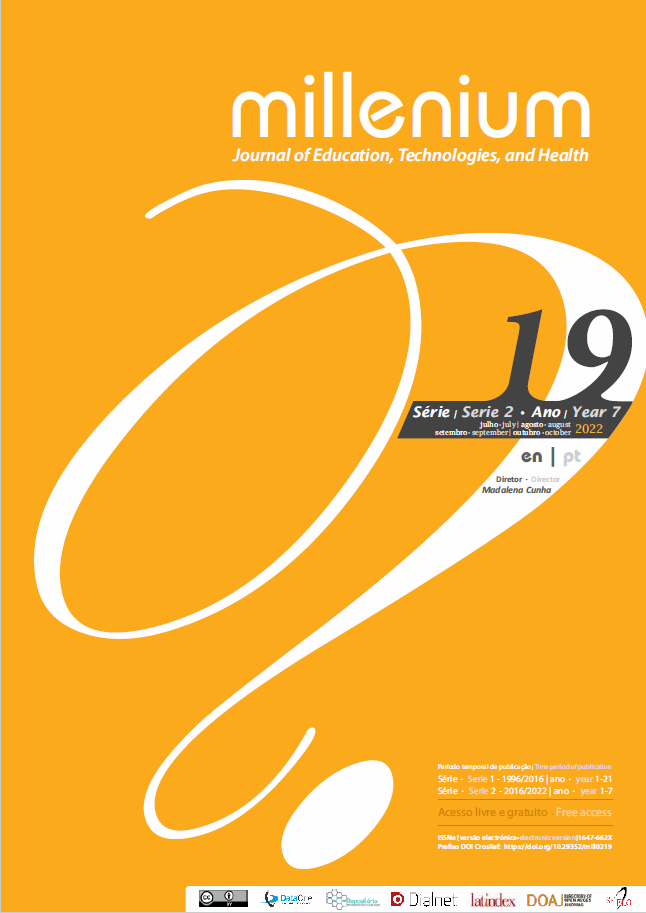Nursing care at critical care patient inter-hospital transfer
a scoping review protocol
DOI:
https://doi.org/10.29352/mill0219.27123Keywords:
critically ill, inter-hospital transport, patient transfer, checklist, guidelinesAbstract
Introduction: In inter-hospital transport of the critically ill patient, safety measures have to be addressed by the nurse who follows the patient's clinical situation with accurate clinical information.
Objective: Map the items in the inter-hospital transport checklist.
Methods: A scoping review will be conducted according to the latest Joanna Briggs Institute (J.B.I.) guidelines regarding methodology. A range of relevant electronic databases and grey literature will be searched using terms such as critically ill, inter-hospital transport, patient transfer, checklist, and guidelines.
Results: This scoping review will consider any type of quantitative, qualitative, and mixed methods study, focusing on items to include in a checklist for monitoring the critically ill patient in inter-hospital transport.
Conclusion: The development and implementation of an inter-hospital transport checklist enable safety during patient transfer. Nurses are the healthcare professionals that mostly accompany critically ill patients between different hospital levels of care. This protocol is registered in the Open Science Framework.
Downloads
References
Association of Anaesthetists of Great Britain and Ireland (2009). Safety Guideline: Interhospital Transfer. pp. 1-20. Retrieved from: https://anaesthetists.org/Home/Resources-publications/Guidelines/Interhospital-transfer-AAGBI-safety-guideline
Australasian College for Emergency Medicine., Australian and New Zealand College of Anaesthetists., College of Intensive Care Medicine of Australian and New Zealand (2015). Guidelines for transport of critically ill patients. Victoria: Australian and New Zealand College of Anaesthetists. Retrieved from: https://www.anzca.edu.au/getattachment/bd5938d2-d3ab-4546-a6b0-014b11b99b2f/PS52-Guideline-for-transport-of-critically-ill-patients
Comeau, Y., Armendariz-Batiste, J., & Woodby, A. (2015). Safety first! Using a checklist for intrafacility transport of adult intensive care patients. Critical care nurse, 35, 16-25. http://doi.org/10.4037/ccn2015991
Hales, B., Terblanche, M., Fowler, R., & Sibbald, W. (2008). Development of medical checklists for improved quality of patient care. International Journal for Quality in Health Care, 20, 22-30. https://pubmed.ncbi.nlm.nih.gov/18073269/
Intensive Care Society (2002). Guidance On: The Transfer of the Critically Adult.
Intensive Care Society (2019). Guidance On: The Transfer of the Critically Ill Adult. pp. 1-40. Retrieved from: https://www.ficm.ac.uk/sites/default/files/transfer_criti-cally_ill_adult_2019.pdf
Kulshrestha, A., & Singh, J. (2016). Inter-hospital and intra-hospital patient transfer: Recent concepts. Indian Journal of Anaesthesia, 60, 13-19. https://pubmed.ncbi.nlm.nih.gov/27512159/
National Health Service. (2021). Framework to support inter-hospital transfer of critical care patients. pp. 1-4. Retrieved from: https://www.england.nhs.uk/wp-content/uploads/2021/12/B1215-framework-to-support-inter-hospital-transfer-of-critical-care-patients.pdf
Ordem dos Médicos e Sociedade Portuguesa de Cuidados Intensivos. (2008). Transporte de Doentes Críticos – Recomendações. Centro Editor Livreiro da Ordem dos Médicos. Retrieved from: https://www.spci.pt/media/documentos/15827260365e567b9411425.pdf
Downloads
Published
How to Cite
Issue
Section
License
Copyright (c) 2022 Millenium - Journal of Education, Technologies, and Health

This work is licensed under a Creative Commons Attribution 4.0 International License.
Authors who submit proposals for this journal agree to the following terms:
a) Articles are published under the Licença Creative Commons (CC BY 4.0), in full open-access, without any cost or fees of any kind to the author or the reader;
b) The authors retain copyright and grant the journal right of first publication, allowing the free sharing of work, provided it is correctly attributed the authorship and initial publication in this journal;
c) The authors are permitted to take on additional contracts separately for non-exclusive distribution of the version of the work published in this journal (eg, post it to an institutional repository or as a book), with an acknowledgment of its initial publication in this journal;
d) Authors are permitted and encouraged to publish and distribute their work online (eg, in institutional repositories or on their website) as it can lead to productive exchanges, as well as increase the impact and citation of published work
Documents required for submission
Article template (Editable format)





